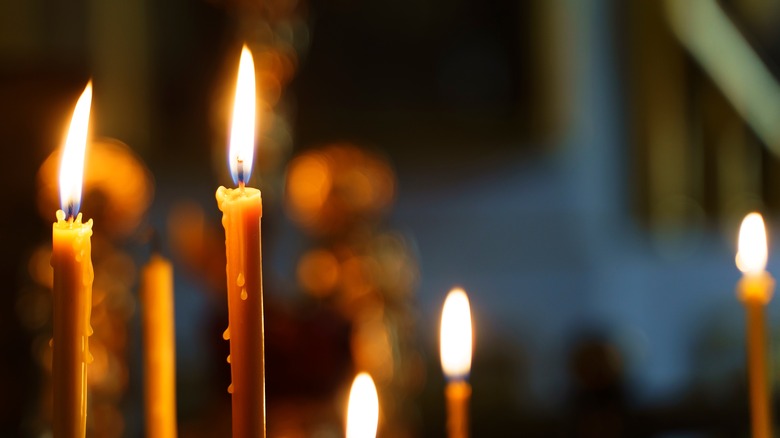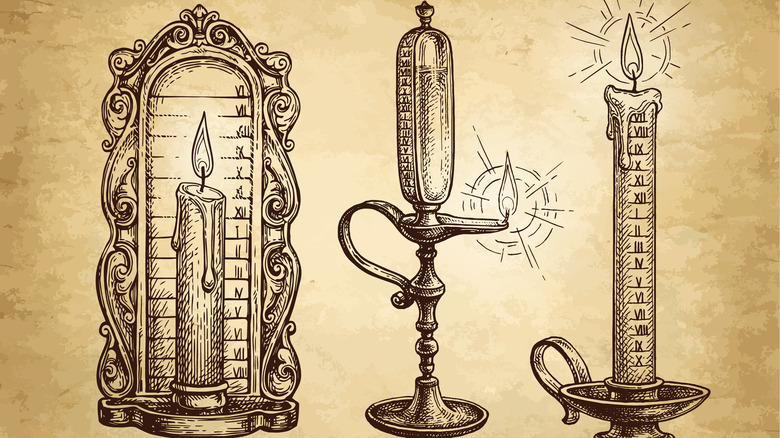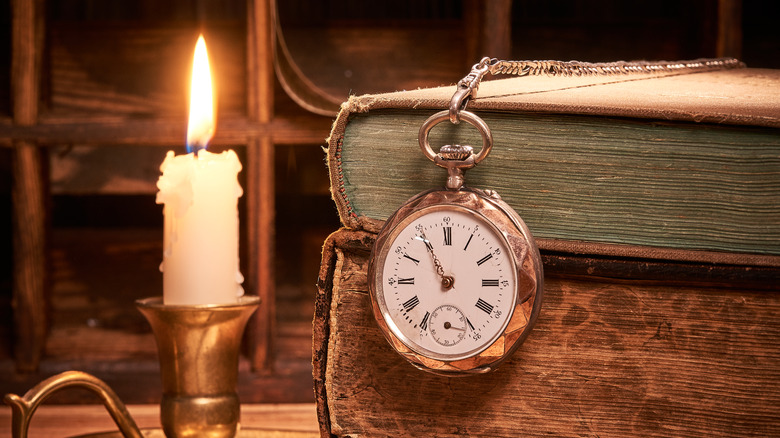History's First Alarm Clock Ingeniously Featured Only 2 Components
When you think of a watch or clock, what do you envision? One of those touch-tech Fitbit things that looks like a black plastic shackle that tracks your heart rate, location, distance walked, and other such Big Brotherly data points? How about one of those chunky sports watches with 10 buttons — none of which make sense — arrayed around the face? Or maybe you've been reading a lot of Jane Austen and imagine a beautiful, antique grandfather clock with brass clock hands in a 19th-century countryside drawing room. Or maybe you think of gold pocket watches on chains that soot-covered railroad workers used to fish out of their pockets and pop open.
Yes, timepieces have come a long way since their early 14th-century days and have gotten complex and hi-tech beyond the imaginings of their first makers. Mechanical clocks — the kind with a swinging pendulum — first cropped up in 17th-century Europe. A prototype wristwatch appeared over 100 years earlier in 1504 in Nuremberg, Germany. And way, way before that, folks just used the stars and the sun. Sundials — vertical stones that tracked shadows cast by the sun — sufficed for ancient Egypt. The ancient Greeks built an ultra-clever water clock about 2,200 years ago called a clepsydra, where rising water levels triggered a mechanical, whistling bird. But more basic than that (yet no less clever) was the candle clock: a candle with some nails stuck in it.
Marking the passage of time
A candle clock is so simple, and thereby so ingenious, that anyone could assemble it from the most basic of components: a tall wax candle and nails. In fact, you don't need nails, exactly — just anything that can pierce the wax. Nails are good because they're heavy and guaranteed to promptly fall when the wax burns low enough. And if you've got a little metal pan or something under the candle, the nails are going to make a big clack and wake you up. Boom: instant alarm clock. And if your tinker enough with the placement of the nails and the thickness of the candle — the candle's burn rate — you've got an immensely practical, profoundly useful tool for everyday use, especially if the whole system can be standardized. And if you don't have nails, you can still track time.
This is exactly what happened, even as early as the first recorded candle clock in history in China. That clock, referenced in a 1,500-year-old poem by You Jiangu, describes a regimented array of candles used to keep time. He used six candles of the same circumference, length, and weight, the latter of which denotes the wax's composition and burn rate. Each candle was 12 inches tall. He didn't use nails to keep time — metal is harder to get by, so nails came later — but etched hash marks into the wax. Each hash mark measured 20 minutes.
Simplicity's evolution
The candle clock was so brilliantly simple and easy to implement that people across the world developed it independently. Candle clocks were used in ancient Rome, for instance. In England, the 9th-century Anglo-Saxon king Alfred the Great implemented candle clocks in churches across the country. By the 12th century, Muslim engineer Ismail al-Jazari — a genius mechanical inventor who, among other things, built a four-instrument robotic music machine — took the candle clock to the next level. He added a dial mechanism to the candle clock that used the movements of pulleys and weights to convert the burn of a candle into an analog readout of time. This is way, way beyond the simple candle-and-nail version of the clock, but it shows how far a basic concept can evolve.
Other variations on the candle clock include placing the candle in a metal holder that hangs on a wall. Rather than etch lines into the wax itself, the holder has ruler-like lines built into it that depict the passage of time. An ultra-complex, 17th-century version on display in the Museo Poldi Pezzoli in Milan connects a simple candle to an ornate mechanism that sounds an alarm; when the candle burns low enough, a Rube Goldberg-like machine gets triggered. All in all, the candle clock is not just an ingenious device in and of itself, but in how it inspired later, creatively-minded people.


